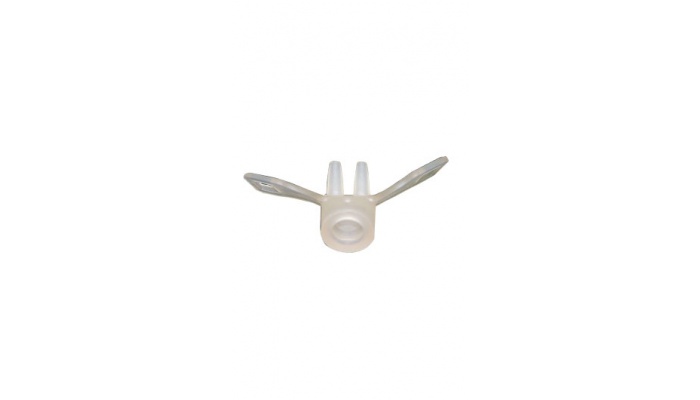Tracheal Cannula
As result of GINEVRI huge commitment to innovation, Nasal Cannula at Low Resistance has developed a system that is comfortable and not traumatic, thanks to its morphology and consistence, and can also be easily interchanged with a tracheal cannula in ventilation circuits, without causing additional breathing work. To ventilate the respiratory system, elastic retraction forces of the lung and the thoracic wall must be opposed, along with the resistance to flow in the airways.
In the newborn, about a third of the total resistances is located at the nose level. It is well-known that in case of breathing distress, a characteristic symptom is the movement of the nose alae. Their aim is to reduce resistances at this level, as a way of counterbalancing the increased work of breathing due to reduction of pulmonary compliance.
The degree of nasal resistances may be increased considerably with the application of cannulas for continuous positive pressure, increasing the patient’s work of breathing. This may result in ipo-ventilation and apnea. This symptom is exaggerated in premature babies because of the use of smaller cannulas.
GINEVRI accepted this challenge and committed huge researches and new technologies to provide the solution.
- The new Nasal Cannula at Low Resistance with ventilation circuits has been developed: to limit the high flow resistance area only to the part introduced in the newborn’s nose, to aid spontaneous respiration and to provide stable airway pressure.
- While, maintaining an insignificant resistance and dead space in the body and connection to the ventilation circuit, it reduces respiratory work.
- Interfacing new Cannula with GINEVRI ultra-sensitive neonatal ventilators Giulia, is possible to further an improvement of the widespread CPAP technique and ensure extreme reliability and accuracy also in SIMV and SIPPV ventilation modes.
- Thanks to the delicate lubrications of the nasal portion and to the different size available, Nasal Cannula is successfully used to treat all babies, from premature to full term.


